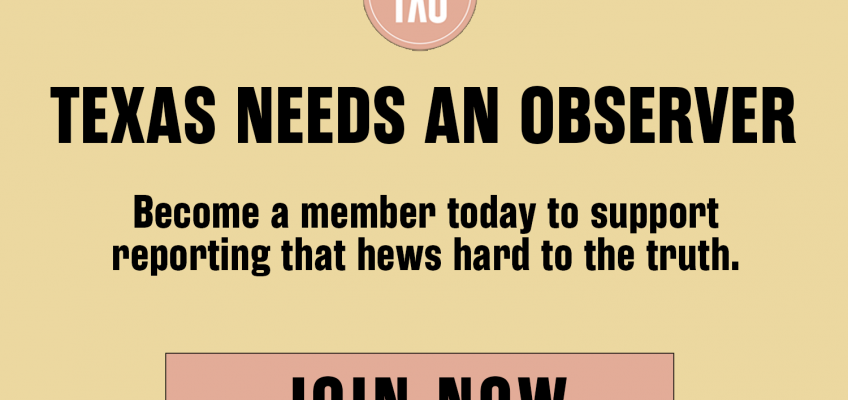Since he began touting it on the campaign trail, the idea that President Donald Trump could enact “mass deportations”—totalling perhaps a million a year or more—has been criticized as a tall order. In his first term, Trump’s administration only carried out about 1.5 million removals total, well short of the yearly deportation rates set by the Obama administration.
Now, first-month deportations data obtained by Reuters shows Trump expelling immigrants at a slower rate than Joe Biden did last year, when the Democrat ramped up his deportation efforts. Trump’s Immigration and Customs Enforcement (ICE) initially shared daily arrest counts on social media, with numbers approaching 1,000, but has since ceased the practice. Population counts in ICE detention under Trump 2.0 have increased from around 40,000 to around 41,000.
Though they’ve successfully spread fear among immigrant communities, Trump and his border czar Tom Homan—who has pledged to run “the biggest deportation force this country has ever seen”—are reportedly already upset that their numbers aren’t more eye-popping.
Among the obstacles to Trump’s vision of the “largest deportation in the history of our country” is a simple lack of manpower: Nationwide, ICE only has around 6,000 deportation agents. For the president’s plans to come to fruition, ICE will likely need not just increased funding from Congress but greater cooperation from local police around the country—in other words, the agency may need to turn beat cops and sheriff’s deputies across the nation into Homan’s henchmen. And in Texas, this process now appears to be kicking off in earnest.
Over the past month, three agencies in Texas—the Office of the Attorney General, the Smith County Sheriff’s Office, and the Goliad County Sheriff’s Office—have signed agreements with ICE establishing what are known as 287(g) “Task Force Model” agreements. These agreements, two of which were obtained by the Observer, allow local officers who’ve received federal training to “perform certain functions of an immigration officer.” Specifically, these functions include the power to “interrogate any alien or person believed to be an alien as to his right to be or remain in the United States”; arrest without a warrant anyone the officer believes “is in the United States in violation of law and is likely to escape before a warrant can be obtained”; execute warrants for immigration violations; and prepare immigration charging documents.
When exercising this newfound authority, local officers must seek guidance from an ICE supervisor—but are allowed to do so “as soon as is practicable” after exercising the authority.
Task force-style 287(g) agreements haven’t existed for 13 years, when they were terminated amid controversy. As of Wednesday evening, ICE had also inked around 60 task force agreements outside Texas: with agencies primarily in Florida, in addition to Oklahoma, Kansas, Nevada, New Hampshire, and Idaho, according to the agency’s website.
“This is the Trump administration desperate to meet the goals that it’s set to carry out its mass deportation agenda,” said Nayna Gupta, policy director at the American Immigration Council. “But he’s having trouble reaching those numbers, because he doesn’t have the manpower and the infrastructure to actually rip away people who have years and years of life in our communities and are deeply entwined. This is the administration trying to ramp up agreements with local law enforcement agencies to be a force multiplier for mass deportation.”
The Texas attorney general’s office was the first agency to sign a new task force agreement. Though the office of the attorney general largely functions as an investigative and prosecutorial arm of the state, the agency also has its own commissioned peace officers and a Criminal Investigations Division. After his office signed the agreement in late January, Attorney General Ken Paxton bragged about the deal and urged other state and local police to do the same.
“I am proud to be the first to join [Trump] to restore our national sovereignty, secure our border, and ensure that criminal aliens face the justice they deserve,” Paxton said in the press release. “As the top law enforcement official in Texas, I call on all agencies and departments to join me in the fight.”
The Smith and Goliad County sheriffs joined Paxton in mid-February. Smith County Sheriff Larry Smith told the Observer he received approval from ICE two days after he signed the initial agreement. His county, home to Tyler, has some 245,000 residents and includes a University of Texas satellite campus. He plans on deputizing 22 officers, he said, to perform the functions of ICE agents.
The 287(g) task force agreement won’t substantially change his deputies’ daily operations, Smith said, and there is already an ICE presence in his county. What may change, though, is his officers may be asked to conduct immigration-related enforcement outside their jurisdiction on occasion, he said. His deputies already do some police work outside Smith County through an anti-gang center. “So, I don’t foresee anything being any different for us,” Smith said.
Goliad is a rural county with a population of around 7,000, located along a major highway halfway between San Antonio and Houston. On his Facebook, Goliad County Sheriff Roy Boyd touted his new agreement, warning: “If you’re a criminal, remember to avoid Goliad.” Boyd, who also created an interagency Operation Lone Star Task Force, did not respond to the Observer’s requests for an interview.
In late January, Governor Greg Abbott signed an agreement with the federal Customs and Border Protection (CBP) to allow Texas National Guard soldiers to enforce immigration law in tandem with the Border Patrol. This agreement is pursuant to a different federal statute than 287(g). In comments to the Texas Tribune, Abbott said the agreement lets the Guard engage in “apprehending, arresting, jailing, and going through the deportation process.” Abbott initially said the state Department of Public Safety (DPS) had been given the same authority, the Tribune reported, but his office later clarified that DPS troopers were not directly making immigration arrests.
It is not clear if Abbott or DPS—which has around 5,000 commissioned officers—plans to deputize the state police force through a 287(g) task force, or any other agreement, which Paxton called for. ICE’s website does not show any agreement with DPS; the Observer requested a copy of any existing 287(g) task force model agreement, and the agency said there were no responsive records.
DPS, ICE, and the offices of the governor and attorney general did not respond to requests for comment for this story.
The 287(g) program’s roots date back to the 1990s. Congress established the program under the Illegal Immigration Reform and Immigrant Responsibility Act of 1996, which added a new section, 287(g), to the Immigration and Nationality Act (INA).
The federal government first entered into 287(g) agreements with local or state police agencies in the early 2000s, as immigration enforcement expanded post-9/11. In President Barack Obama’s first term, deportation numbers soared as the Democrat expanded local-federal cooperation (part of a failed gambit to earn Republican support for bipartisan immigration reform).
But, in 2012—after lawsuits and federal investigations concerning racial profiling and national controversies over the actions of 287(g) task force participant and notorious Maricopa County, Arizona, Sheriff Joe Arpaio—the Obama administration ended the task force model.
“The track record that model in particular had … was one of racial profiling of U.S. citizens, costing local sheriffs a ton of money, subjecting them to lawsuits in federal court,” said Gupta, the policy director at the American Immigration Council. “When local police officers can make immigration arrests and put people into deportation proceedings at large in the community, they lose the trust of the people that they’re there to protect and keep safe. Then those people are less likely to report crimes. They’re less likely to trust public institutions.”
Following the Obama administration’s decision, two other 287(g) models were still used, called the jail enforcement and warrant service officer models. These essentially amount to allowing county law enforcement to screen for immigration status of people booked into jails, and they’ve sparked far less controversy. Trump did not revive the task force model in his first term.
ICE does pay for the training of local cops under 287(g) agreements but does not pay participating state or local police agencies for their time spent enforcing federal immigration law. “They’re using their own resources to enforce federal immigration laws,” Gupta said.
Tom Homan (center) in South Texas in November (Francesca D’Annunzio)
More task force 287(g) agreements may be forthcoming in Texas: The Sheriffs’ Association of Texas recently emailed every county’s top cop—all 254 of them—a sample copy of the task force agreement to sign, the organization’s executive director Thomas Kerss confirmed.
Some Republican lawmakers are also eager to ramp up the program further. Jacksboro Republican state Representative David Spiller—who carried controversial legislation to shift federal immigration authority to the state last session—has filed House Bill 2361, which would compel “each law enforcement agency of a political subdivision” to apply for the 287(g) program or face a possible lawsuit from the attorney general and loss of state grant funding. The bill does not specify a particular 287(g) program model.
Spiller told the Observer HB 2361 was a collaborative effort and he received advice on the draft from attorneys general in other states and the Texas Public Policy Foundation and the blessing of Homan, the border czar.
Over in the Senate, Lieutenant Governor Dan Patrick has reserved Senate Bill 8 for legislation “requiring local law enforcement to assist the federal government’s deportation efforts,” but the bill has yet to be filed.
In Texas, there are more than 80,000 total local and state commissioned officers—dwarfing the 6,000 ICE deportation agents nationwide—setting up a possibly massive increase in Trump’s deportation capacity.
The goal of his bill, Spiller said, is to help ICE target people with criminal records—not simply any undocumented person. “We’re not just rounding people up that have been here forever, that might be in the country illegally. We are serving active criminal warrants on people that are here illegally. So, it’s to assist ICE in that process,” Spiller said.
But the history of 287(g) tells a different story about which immigrants are arrested by local police. A pair of DHS inspector general reports from 2010 show that most immigrants encountered or arrested through 287(g) programs had committed either minor crimes or traffic infractions.
In the early 2010s, the Department of Justice also investigated two sheriff’s departments participating in 287(g) programs, including Maricopa County, and found they unlawfully targeted or racially profiled Latinos.
“Somebody who’s undocumented, or in violation of civil immigration law in another way, doesn’t have a sign that says that on their face,” she said. “So in order to find people … it incentivized local police to target communities where they think they [will] find people to sweep in, and that meant inadvertently arresting or stopping U.S. citizens.”
In addition to reviving the 287(g) task force model program, the Trump administration has invoked a never-before-used legal provision that allows the federal government to deputize local law enforcement to carry out immigration enforcement during a “mass influx” of migrants—despite border crossings currently being very low.
The Texas National Guard agreement between Governor Abbott and CBP was made pursuant to this previously untested provision: section 103(a)(10) of the INA, which was added by the same act of Congress as 287(g). In contrast to 287(g), this provision allows for required federal training of local police to be waived; it also enables greater federal funding of local efforts, according to an explainer by the American Immigration Council. The Abbott-CBP agreement says that training is waived but that Texas will bear the costs.
SIGN UP FOR TEXAS OBSERVER EMAILS
Get our latest in-depth reporting straight to your inbox.
As Trump and his allies in state and local government try to ramp up their mass deportation machinery—expanding its reach far beyond the already militarized borderlands—some advocates are already gearing up to fight back.
In Tyler, where the county has a new task force deal, longtime pro-immigrant activist Dalila Reynoso said she plans to push her sheriff to reverse course.
Prior to signing the new 287(g) agreement, the Republican Sheriff Smith himself held a panel where he talked about how undocumented families in the community had already withdrawn from school, church, and work for fear of deportation. He assured residents during the panel that his department would not be looking for people in grocery stores and that his department’s collaboration with ICE would be limited in scope. Then, following some conservative backlash over his comments, Smith publicly apologized to “the citizens of Smith County, Governor Abbott and his office, Border Czar Tom Homan and President Trump” and emphasized his intention to sign a task force 287(g) agreement, which he did days later.
Reynoso said she is disappointed in Smith. The sheriff has long talked about the importance of building trust with his constituents, Reynoso said, and she thinks the task force agreement is a step in the wrong direction.
“If he also supposedly cares about victims and building that trust with [the] undocumented community, this is not the way you go about it,” Reynoso said. “People should be a priority. Not your politics.”
Justin Miller contributed reporting.
The post Local and State Police Are Joining Trump’s ‘Deportation Force’ appeared first on The Texas Observer.




